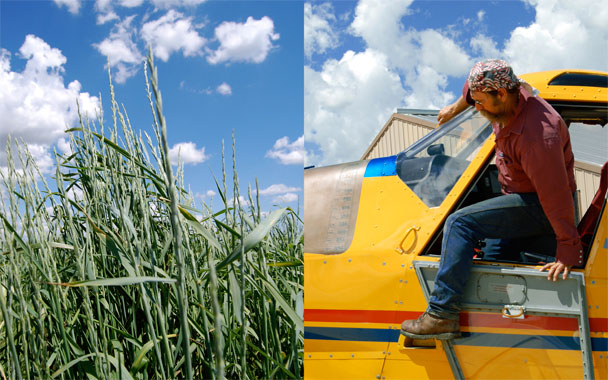Jim Lutter, Brule County, South Dakota
There is a pastoral tradition to American agriculture that finds expression in the small family farms of New England, Virginia’s Shenandoah Valley, and the Corn Belt that slides west of Ohio through Indiana and Illinois to the deep soils of Iowa. This is the tradition of Wendell Berry and Barbara Kingsolver and Michael Pollan. Farming is gardening writ large. Farming is about growing food, and being a steward of the land. Farmers talk about soil and fertility and community. Farming is a human-scale enterprise.
But west of Iowa, farming takes a hard turn to the extreme. On the Great Plains there is nothing pastoral about farming. There is no harmony here. Farming has the feel of war and chaos, with Mother Nature and the international commodity markets providing the “shock and awe.” Farmers talk about rain and blizzard and hail … and wind, the kind that can suck two inches of rain out of the soil in a week and turn it bone dry. Oil is the single most important raw material in modern industrial farming, and the price of petrochemical fertilizer and chemical treatments has doubled in a year, following the arc of oil prices. Fertilizer alone has jumped from about $100 a ton in 2007 to more than $400 a ton this year.
On June 6, Jim Lutter sits at the head of a cluttered table and stares out his picture window. His mustache droops wildly, giving him the air of a mad scientist. Smart, but just a little off. His neighbors are fond of saying that he “bumped his head,” which is a friendly way of saying that he didn’t plant corn in a record corn market.
The sun is shining on his 3,000-acre farm, just east of the Missouri River in central South Dakota, but the wind is blowing hard. His spray plane is grounded, and every few minutes he picks up his cell phone and calls the National Weather Service for an update.
“If I could get in the air, I’m scheduled to spray 7,000 acres today,” he says. But with the winds blowing 35 miles an hour, he’ll sit here instead. Thunderstorms are building on the western horizon. A fifth of the county is under water. Ground sprayers can’t get in the fields, and weeds are growing two inches a day.
In the week that follows, Jim Lutter flies from sunrise to sunset, an hour here, an hour there, dodging hail and thunderstorms and high winds. On June 18, hail the size of softballs falls on Gregory County, about 100 miles south. Local newspapers show huge ice balls in the palm of a farmer’s hand, but it’s the smaller hail, the size of peas, with razor-like jagged edges, that shreds a crop like a lawnmower. The County Farm Services administrator says losses are 100 percent. Lutter describes hailstorms so strong that they tear holes in roofs and break windows. “We’ve got dents in a coffee pot that got left on the kitchen counter during a hailstorm.”




 Pinterest
Pinterest


